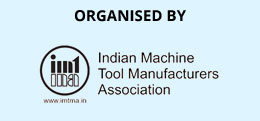Layout transformation and Space Productivity at WABCO AMBATTUR site for future business needs
In order to pursue a significant growth of 100% in next five years, it is but natural to envisage requirement of additional manufacturing premises. However Wabco India Ltd. studied their operations in great depth. The entire project of space productivity in their site has not only involved the conventional way of creating free space by some kaizens but also it featured a companywide approach to de-fragment the existing layout. This innovative approach to increase density in space utilization is truly worth understanding and learning.
Productivity Improvement and flow manufacturing in machining fixtures and gauges through innovation and design standardisation
Can one design and manufacture fixtures which do not use clamps, and no accumulation of chips and that too by creating standard elements? During new product development of machined parts often the longest lead time is design and manufacture of fixtures and gauges. TVS Motor has tackled through standardization of elements. They could achieve lead time reductions of 36% and have applied for a patent. Their innovative approach would be shared in their case study.
Merging the NANO -Front Door & Rear Door Cells into one common Cell (both LH & RH sides) to create the required space for new ‘KITE’ Model Door Cells.
Sometimes optimistic marketing targets are set and not reached while production capacity is geared up for that. This results in idle capacity and companies would like to use the idle capacity to introduce new products. This poses an interesting challenge for the engineering personnel; adapting idle capacity for a product not planned for. In robotic cells this can be daunting. The Tata Motors case study presents how this challenge was overcome on a robotic line, where welding, hemming, sealant application process, material movement was merged for right and left hand doors of their vehicles, Nano and Kite.
Productivity Improvement at Channel Group1 from 7000 Bearings/day to 12000 Bearings/day for 2 bearing types
What does one do when competitors sell bearings below ones cost and market price is 30% below cost? SKF found this issue on two bearings that they sold. They analysed their cost structure in depth to identify the areas. Several steps were taken which included reducing labour cost, improving quality and optimizing parameters using DOE. All this resulted in nearly doubling the productivity on the machining lines and significantly reducing rejection. Their case study shares this journey.
Empty dunnage (Bin Packing) segregation System for space utilisation and inventory management
Maruti Suzuki has conceptualized and developed a patentable empty bin segregation system that helps collect direct online bins and bins on trolley of different sizes, thereby eliminating manual segregation. This innovative empty bin handling system has resulted in manpower optimization, removing the non value added activity of manual segregation with improved availability of time, space, manpower and accuracy for maintaining Kanban system.
Increase in productivity of 1.65 ratio hypoid ring Gear hard turning
Mahindra & Mahindra were challenged to increase productivity in their hard turning operation by 50%. They converted a spring actuated chuck to a hydraulic operated chuck. By doing so they could increase the rpm of the chuck and proportionately increase feed rate during hard turning operations. The increased hydraulic pressure now compensated the increase in centrifugal force due to higher spindle rpm.
RAMP-UP OF SGM-25 (Sundaram Gear Reduction Motor)
Lucas TVS in their case study has presented their approach to increasing productivity by 100% in armature assembly of their starter motors due to a sudden increase in customer demand. Their approach consists of line balancing, improving MTTR and applying SMED principals to bottleneck machines, and reducing imbalance rejections during assembly. Wherever root cause was traced to supplier that too had to be tackled.
To increase capacity of Machining.
Kiehinfie Pvt. Ltd., a carburetor manufacturing company with 70% Indian market share, had to increase manufacturing capacity by 89% in the shortest possible time, with zero investment, and without increasing floor space. Their case study presents how they accepted this challenge in their machine shop and the steps they took that included cycle time reduction in the existing processes without investment, new wood pecking cycle, combination of tools and clubbing operations.
To meet Customer demand through reduced throughput time & increased productivity with state-of-art modular machining centres
Bosch Ltd through their case study have showcased how they moved from standalone machining centres to an integrated system using modular multi-spindle machining centres to meet their target in high volume and critical product. A KT analysis (Kepner Tregoe)was performed to decide the type of manufacturing setup to be used i.e standalone machining centers or modular machining centers focusing on key parameters like capital investment, cycle time, output/day, manpower required, machine parameters like rapid rates, construction, automation etc.
Maximise overall equipment efficiency for Capacity enhancement with minimal capital Investment.
In mass production every second saved is valuable. Normally to expect to save 20% of cycle time on a fully automated robotic welding line is quite challenging. However Bajaj Auto, Waluj, did just that! They looked at saving 0.1 sec for every spot that they were welding. Through their case study they will share how they went about doing very small improvements, which resulted in huge savings. In spite of 16% increase of spots to be welded, they maintained the cycle time.



